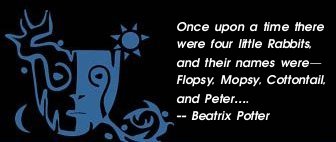|
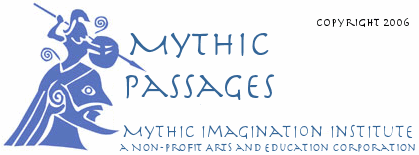
Long Ago in India
A Story About How the YogaSutras Came To Us
As told by T.K.V.Desikachar and written by Mary Davis
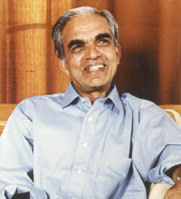
My teacher is T. K. V. Desikachar who lives in Chennai, India. He is the son and was the student for over thirty years of the renowned and revered Sanskrit scholar and yoga master, T. Krishnamacharya. In 1976, both to honor his father and to spread his father's teachings, Desikachar founded a non-profit institution, the Krishnamacharya Yoga Mandiram.
For the reader who is familiar with yoga in the United States, but who does not know about its history, Krishnamacharya was the teacher of his brother-in-law, B. K. S. Iyengar, as well as the teacher of Pattabhi Jois and Indra Devi, all three of whom popularized the study of yoga outside India. Desikachar's son, Kausthub, has recently written The Yoga of the Yogi:The Legacy of T. Krishnamacharya, a beautiful coffee-table style book which tells the story of his grandfather.
I have known Desikachar since the early 1980's, and I recently had the opportunity to hear him tell a story of how we came to have the gift of Patanjali's Yoga Sutras, which I regard as the foundation for the study of yoga.
Desikachar has written an Introduction to Patanjali's YogaSutras, which includes his translation of the Sutras from the Sanskrit and his commentary on them. According to Desikachar, the Vedas are the major source of Indian thought. Of the six great schools of Indian thought, known as Darsanas (mirrors), Yoga is one. And while yoga is mentioned in the Vedas, the Upanisads and other Indian texts, Patanjali's YogaSutras define yoga further, especially in relation to mental activity, to our state of mind. Desikachar translates Sutra 1.2, yogascittavrttinirodhah: "Yoga is the ability to direct the mind exclusively towards an object and sustain that direction without any distraction." (p.2) And as he elaborates in lectures, " stilling the mind, stopping the whirlings of the mind."
The YogaSutras are written in Sanskrit in four chapters with a total of 195 "threads" or aphorisms, and the first step in instruction is usually to learn the sutras by heart, to learn to chant them. Context is very important in the translation of Sanskrit, and a good teacher is critical to the study of the YogaSutras. Desikachar says that the style of the YogaSutras "...condenses the message to a terseness that cannot be corrupted; yet it can be learned by heart so that no part is lost."
Incidentally, the asanas which many persons in our society consider "yoga" are indeed only one aspect of the practice of yoga. Traditionally asanas are practiced to create a healthy body in order to attain a stable mind and to be able to sit in meditation.
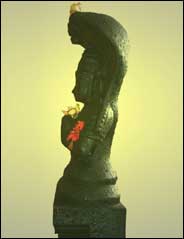
Now, to the story! Very little is actually known about Patanjali. Some believe he was a grammarian who lived in the second century before this era, some believe that "he" was a group of ancient scholars, and some believe that he is the incarnation of Ananta, the divine serpent who supports the universe. Desikachar says that the components of the word Patanjali are "pati" which means "to fall" and "anjali" which means "open palms." (Yoga students may recall the anjali mudra and its open palms.)
As two hundred or so of us, some long - time students and some new students, sit in a packed hotel conference room in Montreal, with rapt attention we hear Desikachar chant to honor Patanjali. Then he discusses Patanjali as "an interesting symbol" and tells us "an interesting story."
Desikachar says,
"Long ago, many thinkers were confused about right communication, about health, and about mental peace. Then, they decided to meditate, hoping for inspiration.
"The highest spirit in our tradition, Vishnu, was reclining, sleeping on a snake with a thousand heads. The snake was a very comfortable bed for Vishnu, and the hood (with the many heads) of the serpent is carrying the whole universe. So the hood of the snake must be very strong and firm to carry the whole universe, but the body of the snake must be very soft to be comfortable for Vishnu.
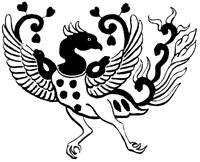
"And right in front of this snake is a bird, Garuda, who is the enemy of snakes. And when the snake wants to travel, it must fly on Garuda, but Garuda has destroyed lots of snakes.
"And to the snake, Vishnu said, 'Do not be distracted by this bird or by visitors!!! Focus only on me!!!' And the snake played this role for a very long, long time.
"And so when seekers asked for help, Vishnu said, 'This snake is a very good example. It is not even disturbed by enemies or even by the beauty of my wife! So he will be a good teacher, an acharya, and he will carry on the universe...and yoga...He is just living on breath and he is so-o physically healthy, and he responds to my questions so well, so clearly!'
"So Vishnu called the snake Ananta, which means something which cannot be measured, and Vishnu said, 'Go help these people."

"Ananta, the snake, then says, 'But, Sir, who will help you?' Vishnu answers, 'I was doing okay before you!' Ananta says, 'And what about the universe?' Vishnu says, 'I will say to the universe — Stay There — and it will stay!'"
Then, Ananta, in his role, in his "incarnation" as Patanjali ( pati anjali, to fall with open palms), with his many heads, we are told, then said to the people, "Here I am to teach you, but do not look at me."
"Patanjali then covered himself and taught the people."
Desikachar continues, telling us that for communication, the people were given Sanskrit grammar; for health, they were given Ayurveda; and for the mind, they were given the YogaSutras, which we all know are attributed to Patanjali.
He continues, " Patanjali's thousands of heads show us that even with communication, we have to communicate the way others understand, so Sanskrit grammar shows us how to communicate in various different contexts. The same is true in Ayurveda — we must know the constitution of the body to know what to prescribe. There is no standardization; it is person by person, according to the constitution and the season. And the same is true with Yoga!"
(Copyright, 2005, Mary Davis)
Return to Passages Menu
|
